PERFLUOROPROPANE
- CAS NO.:76-19-7
- Empirical Formula: C3F8
- Molecular Weight: 188.02
- MDL number: MFCD00039239
- EINECS: 200-941-9
- SAFETY DATA SHEET (SDS)
- Update Date: 2025-12-17 09:49:33
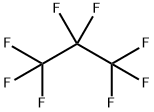
What is PERFLUOROPROPANE?
Toxicity
There is new temporal evidence that perflutren may be associated with new-onset seizure activity following perflutren microbubble contrast injection during dobutamine-atropine stress echocardiography. [PMID: 23432576]
The Uses of PERFLUOROPROPANE
Perfluoropropane is a non flammable greenhouse gas that is used in management of retinal tears in eye. It is also used in refrigeration mixtures.
The Uses of PERFLUOROPROPANE
Ultrasound contrast imaging in cardiology and radiology (diagnostic).
Indications
Used as an ultrasound contrast imaging in cardiology and radiology.
Background
Perflutren, a diagnostic drug that is intended to be used for contrast enhancement during the indicated echocardiographic procedures, is comprised of lipid-coated microspheres filled with octafluoropropane(OFP) gas. When exposed to ultrasound waves, the microspheres resonate and "echo" strong signals back to the ultrasound machine. The difference in density between the gas-filled bubbles and the blood around them creates an increased level of contrast visible in the resulting ultrasound image. During echocardiography, activated Perflutren enhances images of the inner edges or borders of the heart, producing an improved image that may enable physicians to better diagnose patients.
Definition
ChEBI: Octafluoropropane is a fluorocarbon that is propane in which all of the hydrogens have been replaced by fluorines. It is a fluorocarbon and a fluoroalkane. It derives from a hydride of a propane.
brand name
Definity (Bristol-Myers Squibb).
General Description
PERFLUOROPROPANE is a colorless, odorless gas. PERFLUOROPROPANE is relatively inert. The mixture is nonflammable and nontoxic, though asphyxiation may occur because of displacement of oxygen. Exposure of the container to prolonged heat or fire can cause PERFLUOROPROPANE to rupture violently and rocket.
Reactivity Profile
PERFLUOROPROPANE is chemically inert in many situations, but can react violently with strong reducing agents such as the very active metals and the active metals. They suffer oxidation with strong oxidizing agents and under extremes of temperature.
Health Hazard
Vapors may cause dizziness or asphyxiation without warning. Vapors from liquefied gas are initially heavier than air and spread along ground. Contact with gas or liquefied gas may cause burns, severe injury and/or frostbite. Fire may produce irritating, corrosive and/or toxic gases.
Fire Hazard
Some may burn but none ignite readily. Containers may explode when heated. Ruptured cylinders may rocket.
Pharmacokinetics
Perflutren, a diagnostic drug that is intended to be used for contrast enhancement during the indicated echocardiographic procedures, comprised of lipid-coated microspheres filled with octafluoropropane(OFP) gas. It provide contrast enhancement of the endocardial borders during echocardiography. The perflutren lipid microspheres exhibit lower acoustic impedance than blood and enhance the intrinsic backscatter of blood.
Metabolism
OFP is not metabolized. The phospholipid components of the microspheres are thought to be metabolized to free fatty acids.
Purification Methods
Purify it for pyrolysis studies by passage through a copper vessel containing CoF3 at about 270o, then fractionally distil it. [Steunenberg & Cady J Am Chem Soc 74 4165 1952.] Also purify it by several trap-to-trap distillations at low temperatures [Simons & Block J Am Chem Soc 59 1407 1937].
Properties of PERFLUOROPROPANE
| Melting point: | -183 °C |
| Boiling point: | -39 °C |
| Density | 1.35 |
| refractive index | 1.2210 (estimate) |
| storage temp. | Refrigerator |
| CAS DataBase Reference | 76-19-7(CAS DataBase Reference) |
| EPA Substance Registry System | Perfluoropropane (76-19-7) |
Safety information for PERFLUOROPROPANE
| Signal word | Warning |
| Pictogram(s) |
 Gas Cylinder Compressed Gases GHS04  Exclamation Mark Irritant GHS07 |
| GHS Hazard Statements |
H280:Gases under pressure H319:Serious eye damage/eye irritation H335:Specific target organ toxicity, single exposure;Respiratory tract irritation |
| Precautionary Statement Codes |
P260:Do not breathe dust/fume/gas/mist/vapours/spray. P271:Use only outdoors or in a well-ventilated area. P280:Wear protective gloves/protective clothing/eye protection/face protection. |
Computed Descriptors for PERFLUOROPROPANE
New Products
4,4-Difluoropiperidine hydrochloride tert-butyl 9-methoxy-3-azaspiro[5.5]undecane-3-carboxylate Indole Methyl Resin N-Isopropylurea N,N-Dicyclohexylcarbodiimide(DCC) MELDRUMS ACID 5-METHYLISOXAZOLE-4-CARBOXYLIC ACID Magnessium Bis glycinate Zinc ascorbate 1-bromo-2-butyne 2-acetamidophenol 9(10H)-anthracenone Erythrosin B, 4-Piperidinopiperidine 2-((4-morpholinophenylamino) (methylthio) methylene) malononitrile 2,4-dihydroxybenzaldehyde 3-(4-morpholinophenylamino)-5-amino-1H-pyrazole-4-carbonitrile Methyl 2-methylquinoline-6-carboxylate 2,6-dichloro-4-nitropyridine 4-Bromo-2-chlorobenzonitrile 2-(benzylamino)acetic acid hydrochloride 4-(tert-Butoxycarbonylamino)but- 2-ynoic acid 3,4-dihydro-2H-benzo[b][1,4]dioxepine 1-Phenyl-1-cycloprppanecarboxylicacidRelated products of tetrahydrofuran
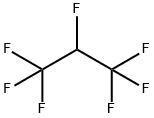
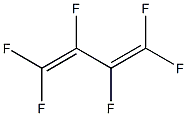
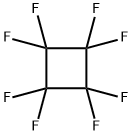

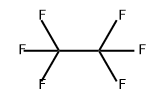

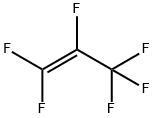

You may like
-
 3-(4-amino-1-oxoisoindolin-2-yl)-1-methylpiperidine-2,6-dione 98%View Details
3-(4-amino-1-oxoisoindolin-2-yl)-1-methylpiperidine-2,6-dione 98%View Details -
 1-methylindoline-2,3-dione 98%View Details
1-methylindoline-2,3-dione 98%View Details
2058-74-4 -
 614-19-7 98%View Details
614-19-7 98%View Details
614-19-7 -
 3112-85-4 Methyl phenyl sulfone 98%View Details
3112-85-4 Methyl phenyl sulfone 98%View Details
3112-85-4 -
 20677-73-0 (2,2-diethoxyethyl)methylamine 98%View Details
20677-73-0 (2,2-diethoxyethyl)methylamine 98%View Details
20677-73-0 -
 3-(4-(hydroxyamino)-1-oxoisoindolin-2-yl)piperidine-2,6-dione 98%View Details
3-(4-(hydroxyamino)-1-oxoisoindolin-2-yl)piperidine-2,6-dione 98%View Details -
 57381-49-4 2-bromo-4-chlorobenzonitrile 98%View Details
57381-49-4 2-bromo-4-chlorobenzonitrile 98%View Details
57381-49-4 -
 4,6-dichloropyrimidine-5-carbaldehyde 98%View Details
4,6-dichloropyrimidine-5-carbaldehyde 98%View Details
5305-40-8
